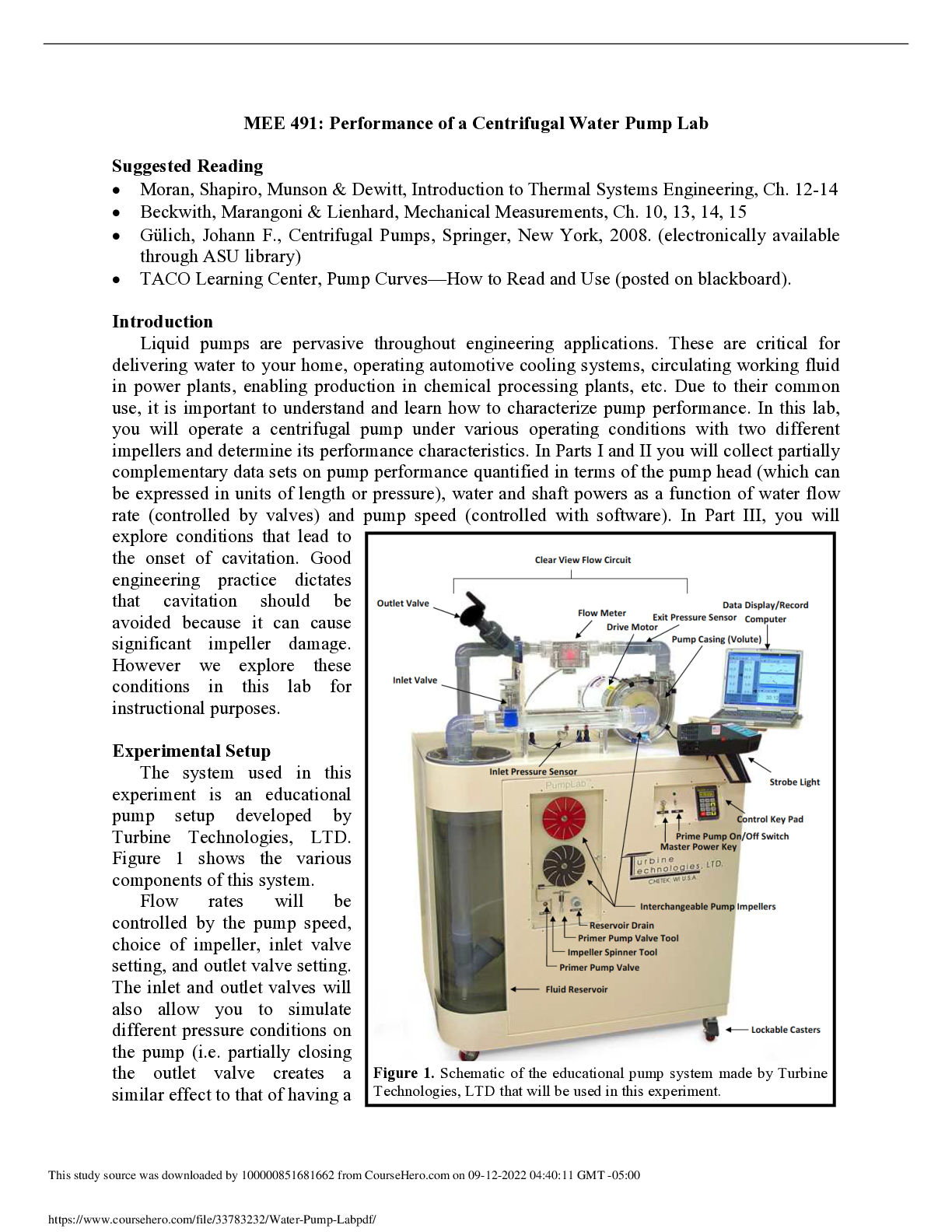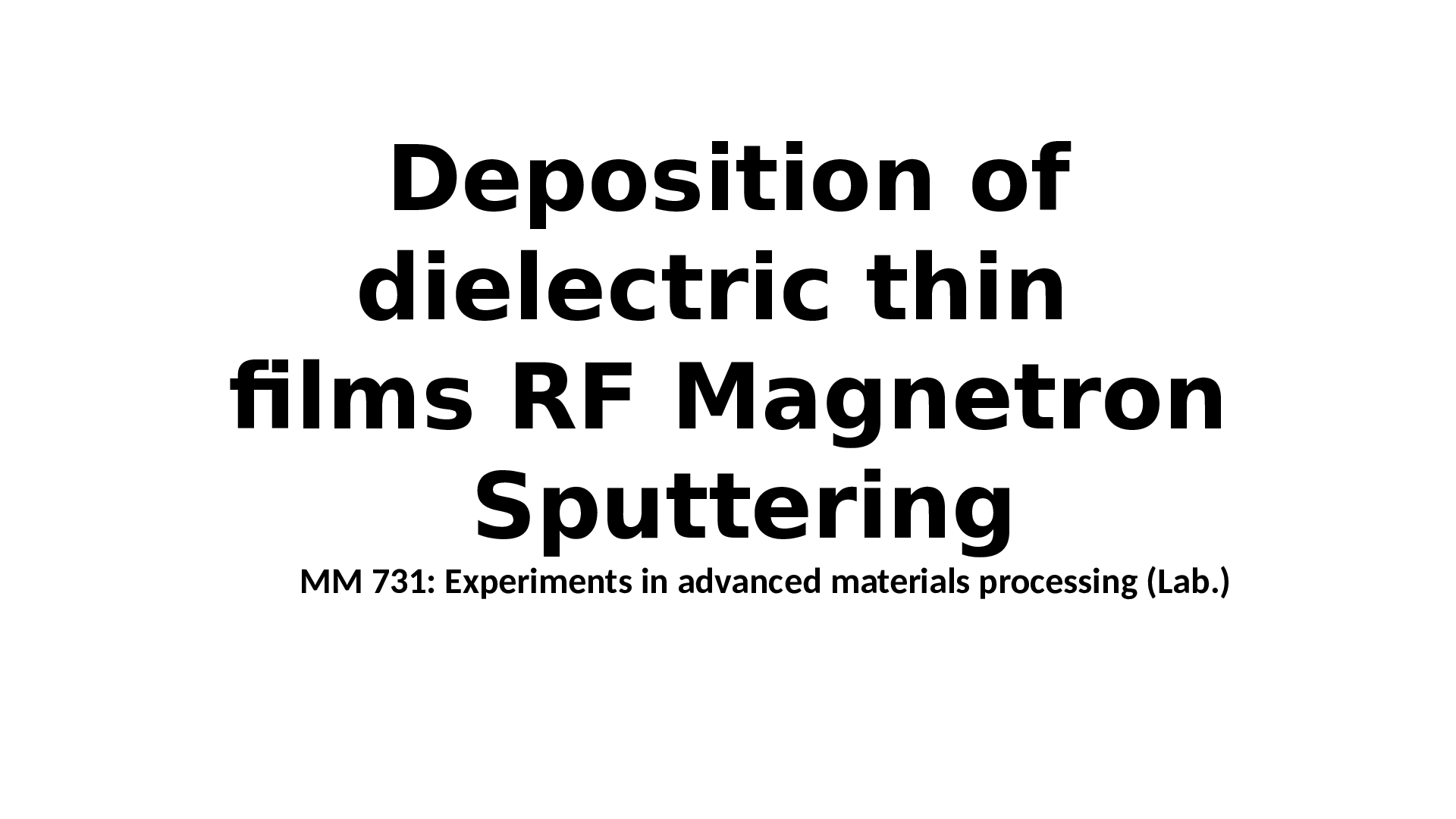Engineering Mechanics > Experiment > MEE 491: Performance of a Centrifugal Water Pump Lab (All)
MEE 491: Performance of a Centrifugal Water Pump Lab
Document Content and Description Below
MEE 491: Performance of a Centrifugal Water Pump LabSuggested Reading • Moran, Shapiro, Munson & Dewitt, Introduction to Thermal Systems Engineering, Ch. 12-14 • Beckwith, Marangoni & Lienhard, ... Mechanical Measurements, Ch. 10, 13, 14, 15 • Gülich, Johann F., Centrifugal Pumps, Springer, New York, 2008. (electronically available through ASU library) • TACO Learning Center, Pump Curves—How to Read and Use (posted on blackboard). Introduction Liquid pumps are pervasive throughout engineering applications. These are critical for delivering water to your home, operating automotive cooling systems, circulating working fluid in power plants, enabling production in chemical processing plants, etc. Due to their common use, it is important to understand and learn how to characterize pump performance. In this lab, you will operate a centrifugal pump under various operating conditions with two different impellers and determine its performance characteristics. In Parts I and II you will collect partially complementary data sets on pump performance quantified in terms of the pump head (which can be expressed in units of length or pressure), water and shaft powers as a function of water flow rate (controlled by valves) and pump speed (controlled with software). In Part III, you will explore conditions that lead to the onset of cavitation. Good engineering practice dictates that cavitation should be avoided because it can cause significant impeller damage. However we explore these conditions in this lab for instructional purposes. Experimental Setup The system used in this experiment is an educational pump setup developed by Turbine Technologies, LTD. Figure 1 shows the various components of this system. Flow rates will be controlled by the pump speed, choice of impeller, inlet valve setting, and outlet valve setting. The inlet and outlet valves will also allow you to simulate different pressure conditions on the pump (i.e. partially closing the outlet valve creates a similar effect to that of having a [Show More]
Last updated: 2 years ago
Preview 1 out of 7 pages

Buy this document to get the full access instantly
Instant Download Access after purchase
Buy NowInstant download
We Accept:

Reviews( 0 )
$8.00
Can't find what you want? Try our AI powered Search
Document information
Connected school, study & course
About the document
Uploaded On
Sep 13, 2022
Number of pages
7
Written in
Additional information
This document has been written for:
Uploaded
Sep 13, 2022
Downloads
0
Views
102



